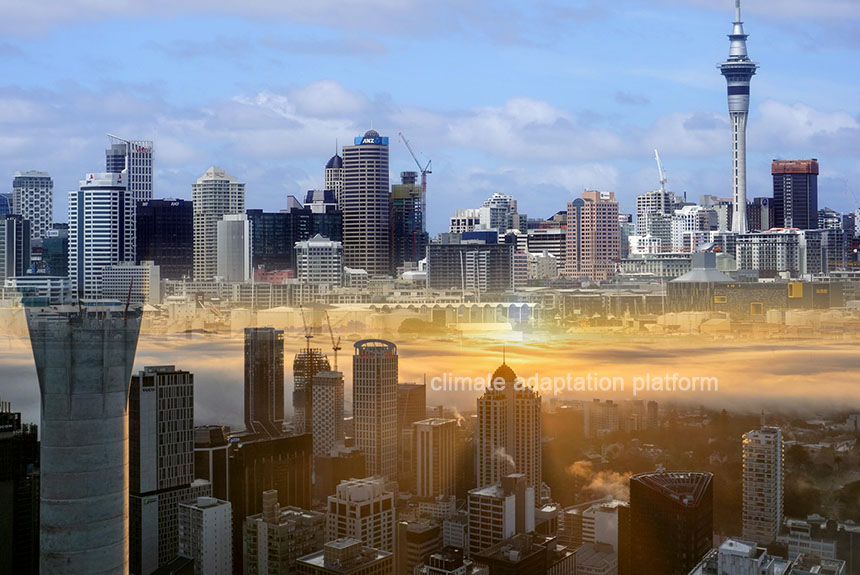Urbanisation’s positive effect on the economy and society is evident. It has opened opportunities, raised the standard of living for many, and supported growth and development, which should be encouraged.
However, the process also has trade-offs; development can degrade the environment and adversely affect the urban microclimate, generating what is known as the urban heat island (UHI) effect. The effects of climate change combined with urbanisation can further complicate the changes to the urban microclimate.
The study, “Urban microclimate impacts on residential building energy demand in Auckland, New Zealand: A climate change perspective,” by researchers from the University of Auckland and Auckland University of Technology, was published online in January 2024. It investigated the impact of urban microclimate on the energy consumption of existing residential buildings in Auckland and presented its findings and recommendations.
Auckland, the study’s location, is New Zealand’s largest and most populous city and is going through rapid urbanisation and development.
Urban development affects urban morphology – the formation and transformation of urban forms of cities over time and, consequently, creating an urban microclimate. The resulting urban microclimate influences the building’s energy consumed for cooling and heating.
However, the researchers noted the urban microclimate is often neglected in building energy performance simulations, which only consider rural weather data. One of the reasons for this is the lack of data on UHI impacts on building energy consumption.
Researchers propose that considering UHI in weather data and energy simulations provides more credible and accurate results in energy simulations. Future studies should investigate the UHI effect in the context of future climate change and urbanisation in areas experiencing significant urban growth.
Climate change and temperature increase in New Zealand
The authors cite studies that show increasing temperatures in Auckland. For instance, research by Chambers and Griffiths in 2008 found a notable increase in hot days and warm nights across the country’s rural and urban regions and a decrease in cool days and cold nights. However, the rise of warm extremes was more pronounced in urbanised zones compared to rural areas. Another study conducted in Auckland, New Zealand, 2015 shows that future urban density and climate impacts will increase the number of days exceeding 25 °C, from 20+ to 60+ days.
Both studies highlight the need to address urban microclimate changes, specifically the UHI’s role in driving temperatures, and adapt to the effects of climate change.
The author’s review of the literature on urban microclimate studies reveals a “huge knowledge gap” in future urban microclimate status in the built environment and climate change research. This gap motivated the authors to conduct a case study in New Zealand and investigate the impact of urban microclimates worsened by climate change on building energy consumption.
A simulation-based analysis of the energy performance of Auckland’s residential buildings shows that the overall effect of urban microclimate reduced heating energy consumption by 2.6% and increased cooling energy demand by 4.35% in spaces in Auckland’s residential buildings.
The researchers write, “The findings of this study have important implications for understanding and evaluating the urban microclimate in residential neighbourhoods. The study provided valuable insights that can assist in further assessments and investigations of the topic. One significant observation from the results is that urban morphology and characteristics play a role in influencing the local weather conditions. This implies that factors such as the layout, design, and physical features of urban areas impact the weather patterns experienced at a smaller scale within the neighbourhood. The study provided valuable insights that can assist in further assessments and investigations of the topic. One significant observation from the results is that urban morphology and characteristics play a role in influencing the local weather conditions. This implies that factors such as the layout, design, and physical features of urban areas have an impact on the weather patterns experienced at a smaller scale within the neighbourhood.”
Read the complete study by clicking the link in the “Source” section below.
Source:
Jalali, Z., Shamseldin, A., & Ghaffarianhoseini, A. (2024, January). Urban microclimate impacts on residential building energy demand in Auckland, New Zealand: A climate change perspective. Urban Climate. Retrieved from https://www.sciencedirect.com/science/article/pii/S221209552400004X



Leave a Reply